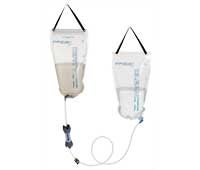Water Treatments Working?

'March 2011 Platypus GravityWorks 200x170'
Question:
How can I be sure my water treatment equipment is doing it job. Is there a way to test this?
Submitted by – Dr – Antwerp, Belgium
Answer:
It’s a bit of a leap of faith. Unless you pay a lab to analyze the output (which is big bucks—trust me I’ve looked into it!) the only way you know is to wait and see. If you don’t get sick, then a) the water was safe to begin with or b) the water was unsafe and your treatment method did its job.
All of the filters and purifiers on the market today have gone through extensive lab testing and EPA certification (paid for by the company, of course) to ensure that it’s removing or immobilizing the cooties it claims to.
The only 100% foolproof method of sterilization is boiling, but that’s not always practical for backpackers due to the amount of fuel it requires, not to mention the time and energy it takes to boil all your water.
People all have different levels of comfort when it comes to water treatment. I know some people who are mighty cavalier about the water they glug without any treatment at all. I know others who are downright paranoid. I subscribe to an in-between philosophy. If I’m hiking anywhere there’s livestock around, I’m purifying my water, either with a UV treatment, a filter and/or chemicals. (check out this review of some great treatment options.)
If I’m high in the mountains and the water’s is melting right off a peak, I’m less concerned and often just add chemicals (like Potable Aqua or Aquamira.) Sometimes I just drink the water straight, like on my recent trip to Iceland, where the water was literally melting off the snowfields into creeks before my eyes, and animals are scarce.
Bottom line: assess the level of risk and do what you’re most comfortable with.